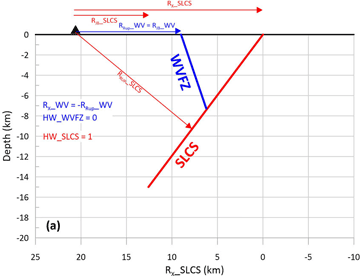
Senior Principal Seismologist Ivan Wong published a paper in Earthquake Spectra with Patricia Thomas titled “Hazard implications of synchronous fault rupture: Case study of the Wasatch and West Valley faults, Utah.” This paper found that synchronous rupture involving two or more antithetic or synthetic faults results in higher levels of ground shaking hazard compared to that computed separately for each fault. It also describes methodologies to estimate the ground motions providing a case study for the Wasatch fault zone and the antithetic West Valley fault zone in Utah.
Abstract: Synchronous rupture involving two or more antithetic or synthetic faults results in higher levels of ground shaking hazard compared to that computed separately for each fault. We describe methodologies to estimate the ground motions both deterministically and probabilistically using a square-root-sum-of-the-squares approach and provide a case study for the Salt Lake City segment of the Wasatch fault zone and the antithetic West Valley fault zone in the Salt Lake Valley, Utah. The amount of increased hazard between the fault pairs will depend on their fault dips and horizontal separation which will dictate their potential rupture areas and hence their maximum magnitudes. For the case study, the increased hazard between the Salt Lake City segment and the West Valley fault zone can range up to 30% primarily at short to moderate periods (<1 s).
Link to article: https://journals.sagepub.com/doi/10.1177/87552930241228611
